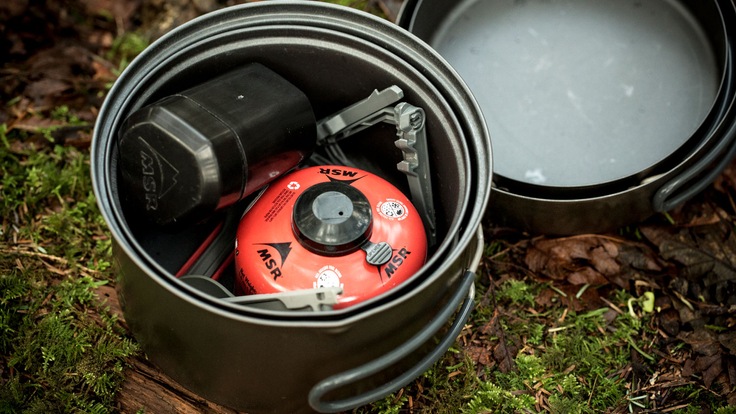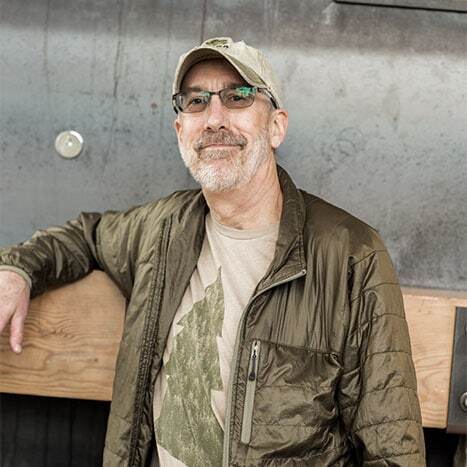Back when dinosaurs (like me) first roamed the backcountry, your choice of stove fuel was pretty much gas (in a sealed canister) or liquid (in a refillable bottle). Interestingly, if you're a newbie hiker today, starting out with a gas- or liquid-fuel stove still makes the most sense.
That's not to say nothing innovative is happening in stoves—there's even one that burns twigs and recharges a cellphone while it cooks your mac and cheese. But, by going with a gas or liquid model for your first stove, you will have the broadest possible range from which to choose. Read on for a quick primer on fuel types. For more details on fuel and stoves, read How to Choose a Backpacking Stove.
Gas vs. Liquid Fuel: Which Is Best?
The quick answer is gas for convenience and liquid for versatility. For a deeper dive into the subject, we lay out the pros and cons of both gas and liquid fuels. We also highlight some alternative fuel options below.
Gas Fuel
A stove attaches to your prefilled/prepressurized fuel canister; the gas inside is typically a blend of propane and isobutane.
Pros
- Super-easy to light (no priming required).
- Excellent flame control.
- Stoves that use it are affordably priced.
- Stoves that use it are lightweight.
- Canister maintains fuel at full potency for years.
Cons
- Harder to ignite in cold temps and at high altitude (isobutane in the mix helps with this).
- Fuel is harder to find in less developed countries.
- When canister nears empty, performance lags a bit.
- You often have to take one extra canister to ensure you don't run out of fuel.
Liquid Fuel
Typically, a stove attaches to your refillable fuel bottle; the fuel inside that bottle is most often white gas, though it might also be kerosene, unleaded auto gas or other options.
Pros
- Maintains full performance in cold weather and at high altitude.
- Fuel is widely available, even in less developed countries.
- Most models can burn multiple fuels, which makes fuel even easier to find.
- You can take precisely the amount of fuel you need on any trip.
Cons
- Priming is required each time you fire up.
- Stoves that use it require refueling and maintenance.
- Stoves that use it are heavier than gas-fueled stoves.
- Stoves that use it cost more than gas-fueled stoves.
A note about recycling empty fuel canisters: Gas canisters are single use, which is justifiably cited as a drawback. It's worth remembering, though, that liquid fuel for stoves also comes in single-use cans. One gets multiple refills out of that container, but it ultimately needs to be disposed, too. And if you have fuel that's several years old in that container, you'll need to dispose of the can and contents as hazardous waste.
As always, check with your local waste collection and recycling agencies to see what the rules are. If you opt for a gas-canister stove, Jetboil's CrunchIt™ tool will up your odds of being able to recycle locally. Be aware, though, that some places consider even empty gas canisters to be hazardous waste.
Other Fuel Options
Twigs: Several brands, including BioLite, Solo and Vargo, make stoves that are fueled by wooden twigs you gather in the backcountry. Whether you go with ones that have high-tech bells and whistles, like recharging capability, or simpler ones, your fuel source isn't guaranteed. You might also find that the Leave No Trace ethics of the area put your fuel source off limits.
Solid fuel: Brands like Esbit make light, inexpensive stoves that run on special fuel tablets. Tablet drawbacks include a noticeable odor and the tendency to leave a sticky residue on pots.
Alcohol: Brands like Solo and Vargo also make stoves that burn denatured alcohol. You can also make your own alcohol stove from soda cans. Though stoves that use it aren't super easy or super precise to use, these are an inexpensive, ultralight choice that makes them popular with thru-hikers. The denatured alcohol these stoves burn is relatively easy to find in the U.S.

